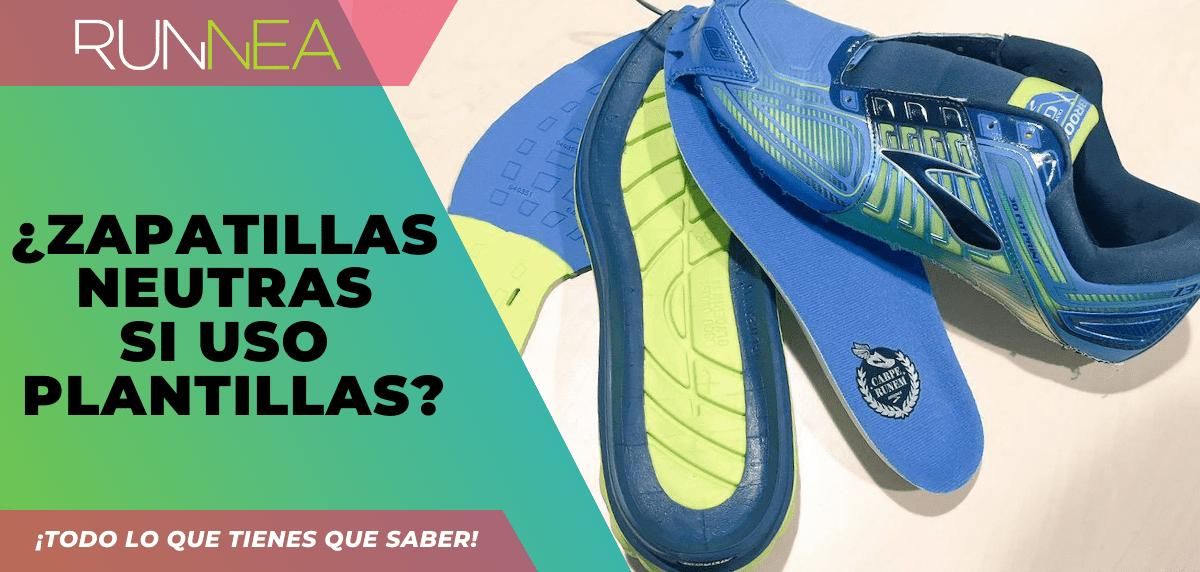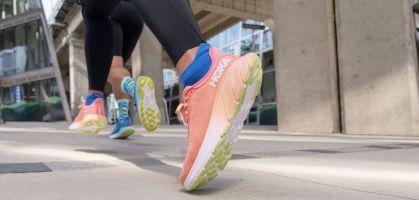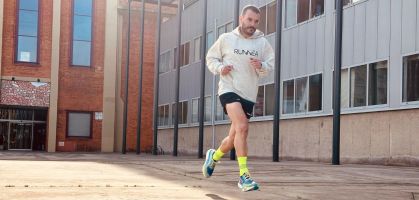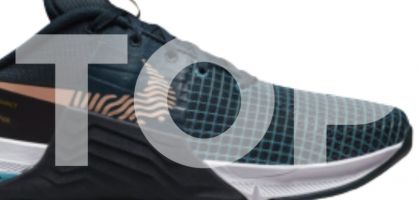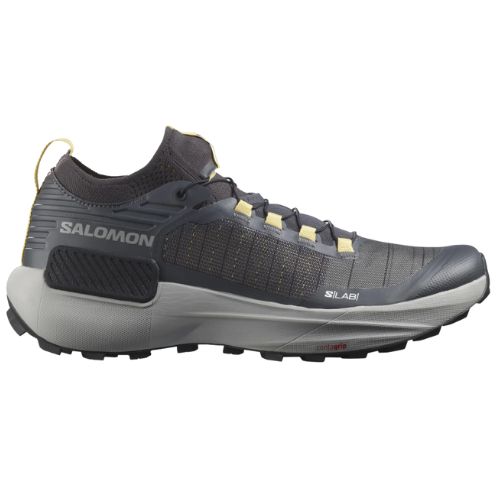Before solving this vital question of the popular runner: Why are neutral running shoes the best option if I use insoles? It is necessary to clarify that the use of insoles for sports in general, and for running in particular, has conflicting opinions. Many of those who do not agree with their use, argue it because of bad experiences or because they say that they have been recommended not to use them because they limit the adaptability of the body to an injury or the specific muscular work that the person needs.
I am sure that if you ask all those who have passed through my center at the PODUM Clinic (Cordoba), more than one of them will speak ill of me. We can all fail!
A well-designed insole will always improve sports performance, since one of its main functions must be to reduce excess joint movement and muscle work. In plain words: it decreases the risk of injury, and something even more important as the fact that it contributes to reducing the energy expenditure made in each stride.
If a runner is uncomfortable running because he feels pain in the joints or muscles, he gets injured easily; or they always occur in the same place, they do not improve their times as they think they should be doing for the time they have been training.....All these variables should lead that athlete to consider a biomechanical study in case he needs to use plantar supports, but always after visiting a specialized sports podiatrist, because he will be the one who can make an assessment and advise him what to change or add to his workouts to improve performance not only with the use of insoles and recommendations on Running shoes, but also working as a team with other professionals who help athletes as coaches, trainers, physical trainers, physiotherapists... Teamwork to improve performance, the maxim is clear, there is no other!
Main differences between footprint analysis and biomechanical footprint study
When we talk about performing a footprint analysis, a pressure platform is usually used, and what we are analyzing is simply our foot rests against the ground. That is, if we have too much bridge, too little bridge, deformities, muscles that do not work or do it in an exaggerated way, etc.
To this equation we must also add the type of analysis system we use (if we add an external camera for example) we can assess what is happening in the knee or even in the hip, but with little accurate information. That said, when the podiatrist who performs this test is experienced, he is able to get all the information he needs to perform a treatment or advise the best for the runner.
- You may be interested in: Types of sports injuries you can suffer when running and how to identify them.
Now, when we do a biomechanical study of the footprint, we are talking about another level. We talk about angles, degrees, rotations, loads, forces... high-definition cameras are used and super slow motion recordings are analyzed to detect the smallest detail that will help us improve performance to the maximum.
These biomechanical studies help us to evaluate the athlete numerically (i.e., objectively) and to compare in successive studies the improvement or not of the treatment carried out, without the subjectivity of the runner's opinion.
It is like comparing a Seat with an Audi.... They have many of the same parts, but the performance is somewhat different!

What type of shoe should I buy: neutral, pronator or supinator, if I need insoles for running?
Quick and short answer: neutralRunning shoes. And now a little meeting...
Over the last few years we have done a lot of outreach to eliminate questions like "are you a pronator or a supinator?" which was so fashionable in an advertising campaign. Mainly because these terms are used as something negative..... "You are a pronator!!!!! jijiji" seems to point the finger at your training partners when they detect that you put your foot inwards....
We need to know that we are ALL pronators; and if you don't pronate, you don't run. It's that clear.
I understand what running shoe manufacturers want to convey when they classify shoes as neutral, pronator and supinator, but I think we should change the terminology, and talk about shoes with more or less "pronation control".

The great dilemma of supinator running shoes
Classifying a running shoe as a pronator is very easy. Most of us can tell them apart just by looking at them, but when it comes to supinator running shoes...that's a different story. To date there have been very few, very few Running shoes that actually have control elements on the outside of the shoe. Only a couple of models come to mind.
Many times you find yourself classifying a shoe as a supinator for the mere fact of being very stiff to external torsion. And that's fine. But just as it controls external torsion, it also controls internal torsion...so other websites classify it as a pronator!
No problem. Let's classify Running shoes according to the degree of torsional resistance and stability they have, and relate it to the degree of supination or pronation of the foot.
And now I qualify my initial answer: if we use insoles, I recommend neutral shoes; but if our degree of joint instability during the race, our weight, our hyperlaxity, our injury history...is important, it is better to use shoes with a degree of torsion control, adding insole/shoe efficiency. In the end, shoes with a carbon plate or pseudo-sole, as they limit lateral movements, and together with the geometry of the shoe, make you move faster.

Insoles only for overpronators?
It also vaya without saying that the use of insoles is not exclusively for runners with over-pronation. Far from it, in fact, there are great runners with exaggerated pronation values, and they do not get injured.
In fact, during running, much more injuries are caused by rotations or twists of the tibia or femur bones, hip anteversions or tilts, spinal scoliosis, inward or outward knees, shortening of muscle chains.....Here the insole should COMPENSATE and LIMIT, but NOT CORRECT.
Is the home trick of looking at the wear of the shoe to know when to change it valid?
Speaking of neutral, pronator and supinator, it is also interesting to note that this home-made trick of looking at the wear of the shoe -on the outside or inside- can be a guide to know when we are obliged to change our material. But I think it is only valid in 40% to 50% of the cases, and less so since we have on the market midsole materials with such a high fatigue rate as some of the ones we have now available.
- You might be interested in: The best top cushioning Running shoes for nuetros runners.
Every day we see runners who supinate and wear out the shoe on the inside!!!!. This is due to what is called "tibial incidence". Let me explain. When running we do a succession of supports with left leg and right leg, and every time we hit the ground, our body mass is directed by the femur, knee, tibia, ankle and foot. If all these bones are aligned everything goes perfectly, but if we have bowed legs, as for example soccer players, the force that goes down the tibia follows the curved line of the bone and when we reach the ankle, even if our support is on the external area of the foot, the forces will be directed mainly towards the internal side of the foot, fatiguing the materials of the midsole and deforming the shoe on the internal side.
In addition, almost no runner is a pure pronator or supinator. If we divide the stride into three phases of support: heel, midfoot and propulsion, we can find runners who are great supinators in the first phase and great pronators in the toe-off phase. Or many other combinations.

What material should the insole be made of?
The use of carbon fiber to make insoles has been on the market for many years. In Italy it has been used and is used on a regular basis, but not in Spain. Carbon has great virtues such as the minimum thickness and the great reactivity it offers. But it also has great disadvantages such as the difficulty of its handling (it requires a large learning curve), the edges can cut the shoe or make wounds in the skin, if it is not well finished and above all ... its high cost price (although seeing how easily today are sold shoes that pass the 200 € ...).
Personally I design and make insoles that, in many occasions, have more than 6 or 7 different materials. I start with a base made of resin (I almost always combine two different types) that allows me, after heating them to about 90 degrees, to adapt them perfectly to the runner's foot and give them a certain shape that helps me to control the runner's movements. From there I add EVA's, PEVA's, Rubbers, Latex, Viscoelastics, Propellants... In short, we use a material list of approximately 50 different materials with different thicknesses.
These materials require a large initial investment compared to many others on the market, but allow you to individualize the treatment perfectly by zones (heel, midfoot and forefoot as well as outside and inside). At the same time, it allows you to retouch the insole as many times as you need (both corrections and materials that wear out)...
Like everything, it also has disadvantages, such as the time it takes to make one of these insoles, which is longer.

What is the price of a well-developed insole tailored to the runner's foot?
When it comes to prices and the investment in insoles, these can vary greatly. Depending on the center where you go, the city, the materials used... There are no regulated minimum or maximum prices.
We can divide the subject into two parts: the first part is a visit to get to know the runner, a medical history is taken (with the most interesting data on injuries, training, reason for the visit...), then the runner is examined, and finally a biomechanical study is carried out. A diagnosis is made and a treatment is proposed (as we have said in an integrated manner with the other professionals working with the runner).
If it is decided to make insoles, and depending on the technique used to make the insoles, molds of the feet must be made, and then adapt the insole on the molds. This visit can vary between 50€ and 100€.
Subsequently, the athlete is visited again for the adaptation of the insole with the necessary modifications and verification that the insole adapts well to the shoe. If live fitting techniques are used, during this visit the insole is fitted directly on the runner's foot and the appropriate checks are made. The insole is usually paid for at this visit, which can vary between 150 € and 200.
It is common for a check-up to be carried out a few weeks later and for this visit to be free of charge. The total investment can be between 200 and 300.
What is the average durability of the insoles, their lifespan?
On the other hand, and no less important, the durability of the insole for runners will depend a lot on the materials, but we can put an average of 5 years. Although for sports I will tell you that professional soccer players and paddle players may need 3 insoles per season without any problem.
What most punishes the insoles is to be removing and putting them in different shoes. Thus, I have had cases of runners who come to my office to renew their insoles after more than 10 years of use, and they could still have lasted a little longer.

Some basic tips for maintaining insoles
And finally, the maintenance of the insoles with the idea of prolonging their useful life. Here are some basic tips, which, although obvious, are effective:
- Generally speaking, insoles can be washed with water and neutral soap, but it is not advisable to put them in the washing machine.
- They also don't like to be dried in the sun or on a radiator. Wiping them with a cloth or towel is sufficient.
- To make an annual or every two years revision, extends the useful life of the insole a lot, because if you notice any piece that begins to fatigue, you can replace it with a new one.
- Putting the insole in a shoe that is narrower or shorter, makes us have to bend it to enter, forcing the materials and sometimes they get damaged. It is better to retouch the insole or not to use it in that shoe.
- It is also advisable to leave them slightly removed from the shoes at night so that they can ventilate and dry if they are wet.
- Some of the materials used are of special interest to dogs, and it would not be the first time they bite them. It is best to keep them out of reach of pets.
Opening photo: Brooks Running(Facebook).
Read more news about: Running News
